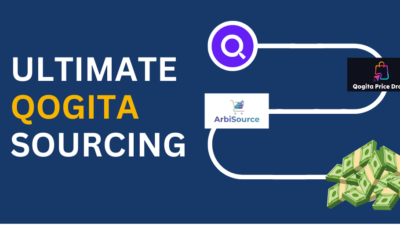The Overlooked Power of Replenishable Products
In the world of Amazon FBA and Online Arbitrage, most sellers (me included) spend their sourcing time constantly chasing fresh leads, new deals, and looking for in-season products. While this approach is essential, there’s one sourcing method that’s surprisingly neglected (even by experienced sellers!), yet it’s one of the easiest and most effective strategies for long-term success and hitting your monthly target spend.
The method we’re discussing today is replenishing items you’ve already sold. Now this may sound boring and obvious, but it’s crazy how many leads you can find going through your old stock. With seller drop offs happening regularly on product listings, the same type of sales occurring frequently and products still being profitable leads, opportunity is constantly occurring when searching through your old stock.
So, let’s dive into this topic and explore this further!

Why Replenish Old Stock?
It’s easy to assume that once a product sells out, it’s no longer available at the right price or isn’t worth revisiting. But in reality, this isn’t always the case.
In my experience, I consistently find one or two products every month that I can replenish. These are items I’ve sold before, but I revisit them to see if conditions have changed, for example:
• The seller competition has decreased.
• The product’s price has returned to a discounted rate.
• A previous discount code is still valid.
• Or maybe, the item is simply back in stock at a profitable price.
By replenishing these products, you create a steady flow of income through products that you know can sell repeatedly, often at a predictable price and pace.
Observing Replen Patterns
Since you’ve already sold the product once, you already have experience with the products price behaviour, this can give you an edge over other sellers. By revisiting the Keepa graph, you can analyse key patterns, meaning you can optimise your profit and sales per month.
The following patterns can be considered when replenishing your product:
• Does the price frequently drop before rising again?
• Is there a seasonal trend you can take advantage of?
• Should you hold the product for a higher price or sell it immediately?
The above insight allows you to make better and more methodical purchasing decisions, increasing your chances of higher profits and sales per month.
Price Pattern Examples

The diagram above is a perfect example of how you can time when to sell your products.
Not all charts may be as straight forward to read as this, but looking at the chart you can see that the seller amount drops off at the end of each month.
By looking at this chart, you can ensure to hold your stock until the end of each month when the seller amount drops off, meaning you will be able to achieve a higher price (usually) and a larger proportion of the sales for that period.
How To Track & Replenish Old Leads
To make the replenishing and product tracking process simple and effective, follow these steps:
✅ Set Up Your Tracking System (Shown in the “Setting Up Google Sheet” below.
✅ Document Sold Items:
• Each time a product sells out from your inventory, copy the ASIN.
• Paste the ASIN into SellerAmp and press the Export button.
• This will automatically add the ASIN to your Google Sheet.
✅ Every two to four weeks (or at least monthly), review your Google Sheet:
• Copy the ASIN of each item.
• Paste it back into SellerAmp to analyse its current status.
• Search Google for the product at the original retailer or alternative stores.
By manually sourcing these items, you’ll often find that previously unprofitable leads are now viable again.
Setting Up Your Google Sheet

- Head over to SellerAmp SAS.
- In the top right corner, click on the Google Sheets icon or navigate to the “integration sheet.”
- Follow the prompts to authorize SellerAmp to access your Google Sheets.
- After connecting, you will be able to customise which data fields from SellerAmp are exported to your Google Sheets and arrange them in your preferred order.
- You can also set up multiple Google Sheets to categorize products differently, such as by sourcing method or profitability.
- You can also add tags and notes to products, which will be included in your Google Sheets export.

Final Thoughts
This method is incredibly effective, yet so many sellers ignore it in their pursuit of “new” leads. I strongly encourage you to revisit your old sales and treat them as potential opportunities for future profits.
That’s it for this instalment of the Online Arbitrage Series. Stay tuned for the next blog, where we’ll dive deeper into more OA techniques.
You can find other articles in this series here:
Mastering Online Arbitrage – Part 1
Mastering Online Arbitrage – Part 3
Mastering Online Arbitrage – Part 4
Mastering Online Arbitrage – Part 5




